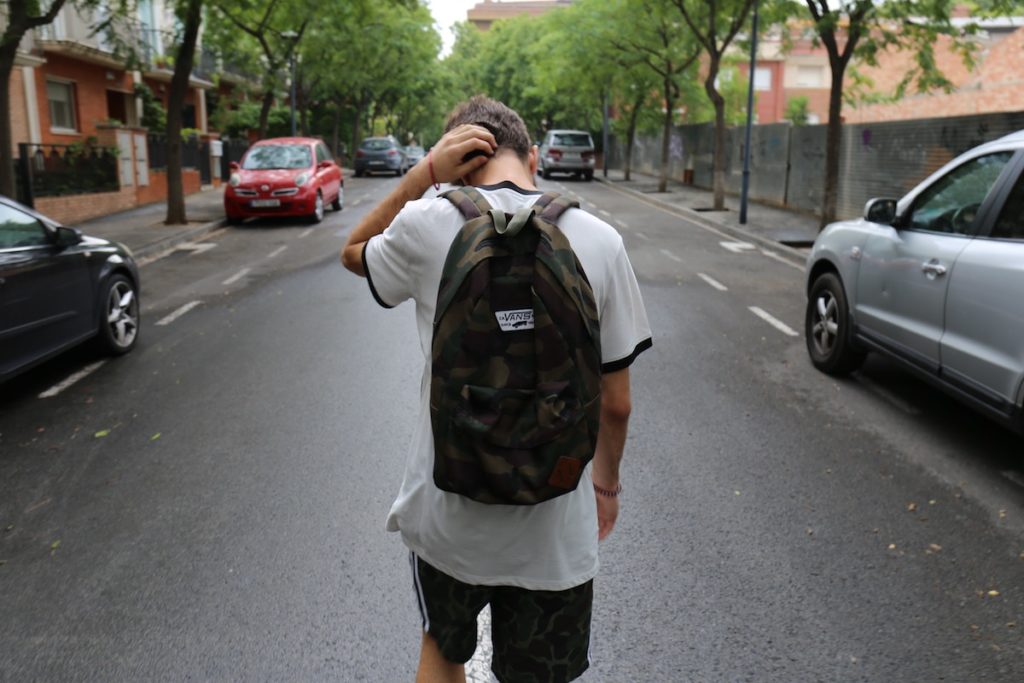
We undergo profound changes during adolescence, involving physical growth, sexual maturation and psychological development. Meanwhile, as adolescents our social environment is rapidly changing, both in society’s reaction toward us and in our own understanding of where we fit into the social hierarchy. This period of heightened plasticity offers a fantastic opportunity for learning, creativity and social development. However, all of this change together means that it is also a particularly vulnerable time.
Mental health disorders and psychosocial difficulties frequently begin during adolescence (Blakemore & Mills, 2014), although they are often detected later in life. Mental health difficulties in adolescence predict many adverse outcomes in adulthood, including poor academic attainment, lower lifetime income and mental health difficulties (Fergusson et al, 2007; Naicker et al, 2013).
Evidence suggests that adolescence is a key period in life, where it is essential to promote ‘resilient’ psychosocial functioning (PSF).
van Harmelen et al., (2017) recognised that in order to promote more ‘resilient functioning’ in adolescence, it is crucial to clearly define it and identify its predictors. Hence, first of all this study quantified resilient functioning by taking into account:
- Multiple psychosocial domains (i.e. psychiatric symptoms, personality traits and mental wellbeing)
- Self-reported experiences of the family environment in childhood.
Consequently, van Harmelen et al., (2017) defined resilient functioning as:
the degree to which an individual functions better or worse than expected given their self-reported childhood family experiences.
The authors aimed to investigate the relationship between adolescent family and friendship support on adolescent resilient PSF in healthy adolescents (aged 14-24). ‘Resilient functioning’, is not static and changes over time, possibly according to family and friendship support (van Harmelen et al., 2016). Thus, van Harmelen et al., (2017) explored whether resilient functioning is better associated with family and friendship factors when measured twice, roughly a year apart.

Adolescence is a key time period for the emergence of psychosocial and mental health difficulties.
Methods
Adolescents were recruited from the NSPN study cohort, a multi-centred accelerated longitudinal community cohort (Kiddle et al., 2017).
In total, complete data for N=1,890 young people were collected at baseline and N=1,093 roughly one year later. Participants completed a battery of 15 questionnaires at both time intervals to measure psychosocial functioning, childhood family experiences and predictors of resilient functioning. Psychosocial functioning was split up into three areas: Psychopathological symptoms, mental wellbeing and personality characteristics. Childhood family experiences, were measured by looking at parenting styles. Finally, predictors of psychosocial functioning were looked at in two ways: Specifically quantifying overall family functioning, and by the number, availability and quality of friendships.
Results
Three steps were used to establish a measure of resilient functioning:
- Data reduction, a Principle Component Analysis (PCA) was used to establish individual composite scores for PSF, and childhood family experiences (finding the components that best explain the variance)
- Regressed PSF on childhood family experiences
- Residual scores were extracted from this relationship, reflecting individual levels of psychosocial resilient functioning.
This allowed a more sensitive measure of the extent to which an individual had better, or worse, PSF outcomes than the average score expected given their childhood family experiences:
- Childhood family experiences had a significant association with PSF. Specifically, recalling more negative family experiences was associated with worsening current PSF
- Friendship and family support were both positive predictors of immediate resilient PSF
- Notably, friendship support was a stronger predictor of immediate resilient functioning than family support
- Importantly, adolescent friendship support, but not adolescent family support was related with later resilient PSF. This was apparent after also accounting for baseline resilient functioning and family support.

Friendship support was a significant positive predictor of later resilient functioning, but family support had a negative relationship with later resilient psychosocial functioning.
Conclusions
The authors concluded that friendship support, but not family support is an important positive predictor of immediate and later resilient PSF in adolescence, suggesting that friendship support may be an important protective factor in adolescence. This extends previous findings demonstrating adolescent friendship promotes subsequent resilient functioning in adolescents exposed to negative childhood family environments (van Harmelen et al., 2016).
Strengths
A specific strength of this study lies in its conceptualisation of adolescent psychosocial resilient functioning. By taking into account childhood family experiences, individuals with negative childhood family experiences, who then have moderate outcomes can be included as ‘resilient’.
Limitations
Low-levels of negative family experiences were reported. Therefore, it is not known whether adolescent friendships predict later PSF in individuals with more negative childhood experiences.
Complete longitudinal data were only collected for 1,093 young people, around 800 less than the original sample. This decreases the power to detect long-term effects and introduces biases. Participants had to complete 15 self-report questionnaires at both time 1 and 2. This is a large number of self-report measures, and it is likely that the reliability of the data decreased depending on the order the participant completed the questionnaires.
The influence of siblings on resilient psychosocial functioning is also not specifically discussed. It is possible that increased or decreased resilient functioning in a sibling or a positive or negative relationship with a sibling, predicts immediate and later resilient functioning.
How adolescent friendship support increases resilient functioning is unknown. It is possible, that because adolescents are particularly motivated to engage with their peers (and are more influenced by their friends) that they over-report the positive impact of adolescent friendships, simply because they are more motivated to attend to them. Whereas, a supportive family environment is less noticeable to an adolescent individual, yet provides the foundations for positive friendship support. Further research could benefit by using a combination of parental, self-report and behavioural techniques to gain a more rounded picture of psychosocial functioning and its predictors.

This type of research is subject to self-report bias and recall bias. Is it possible that the young people in the study simply over-reported the positive impact of their friendships?
Implications for practice
Prioritising interventions promoting the skills needed to form and maintain positive social bonds in adolescence may be essential in promoting adolescent resilient functioning. In addition, creating positive social environments in schools and wider society to allow adolescents to easily acquire and maintain social relationships is equally important.
However, from this evidence we shouldn’t disregard the significance of family support. Future research should also investigate adolescent social motivation, and how this may influence their self-reported experience of their life.

Do adolescents have enough positive social environments these days to easily make and keep friends?
Links
Primary paper
Van Harmelen A, Kievit R, Ioannidis K, Neufeld S, Jones P, Bullmore E, Dolan R, The NSPN Consortium, Fonagy P, Goodyer I. (2017) Adolescent friendships predict later resilient functioning across psychosocial domains in a healthy community cohort (PDF). Psychological Medicine, 47 (13), 2312-2322. doi:10.1017/S0033291717000836
Other references
Blakemore S-J, Mills KL (2014). Is adolescence a sensitive period for sociocultural processing? Annual Review of Psychology, 65, 187–207.
Fergusson, D. M., Boden, J. M., & Horwood, L. J. (2007). Recurrence of major depression in adolescence and early adulthood, and later mental health, educational and economic outcomes. The British Journal of Psychiatry, 191(4), 335-342.
Kiddle, B., Inkster, B., Prabhu, G., Moutoussis, M., Whitaker, K. J., Bullmore, E. T., Dolan, R., Fonagy, P., Goodyer, I., & Jones, P. B. (2017). Cohort profile: The NSPN 2400 Cohort: a developmental sample supporting the Wellcome Trust NeuroScience in Psychiatry Network. International journal of epidemiology.
Naicker, K., Galambos, N. L., Zeng, Y., Senthilselvan, A., & Colman, I. (2013). Social, demographic, and health outcomes in the 10 years following adolescent depression. Journal of Adolescent Health, 52(5), 533-538.
van Harmelen A-L, Gibson JL, St Clair MC, Owens M, Brodbeck J, Dunn V, Lewis G, Croudace T, Jones PB, Kievit RA, Goodyer IM (2016). Friendships and family support reduce subsequent depressive symptoms in at-risk adolescents. PLoS ONE 11, e0153715.
Photo credits
- Photo by Helena Lopes on Unsplash
- Photo by Jesús Rodríguez on Unsplash
- Photo by Sam Manns on Unsplash
- Photo by Josh Applegate on Unsplash
- Photo by Mike Erskine on Unsplash

[…] childhood develop resilience in adulthood through developing strong relationships with others. This account of a recent study from the Mental Elf explains how this might […]
Interesting findings.
Very interesting